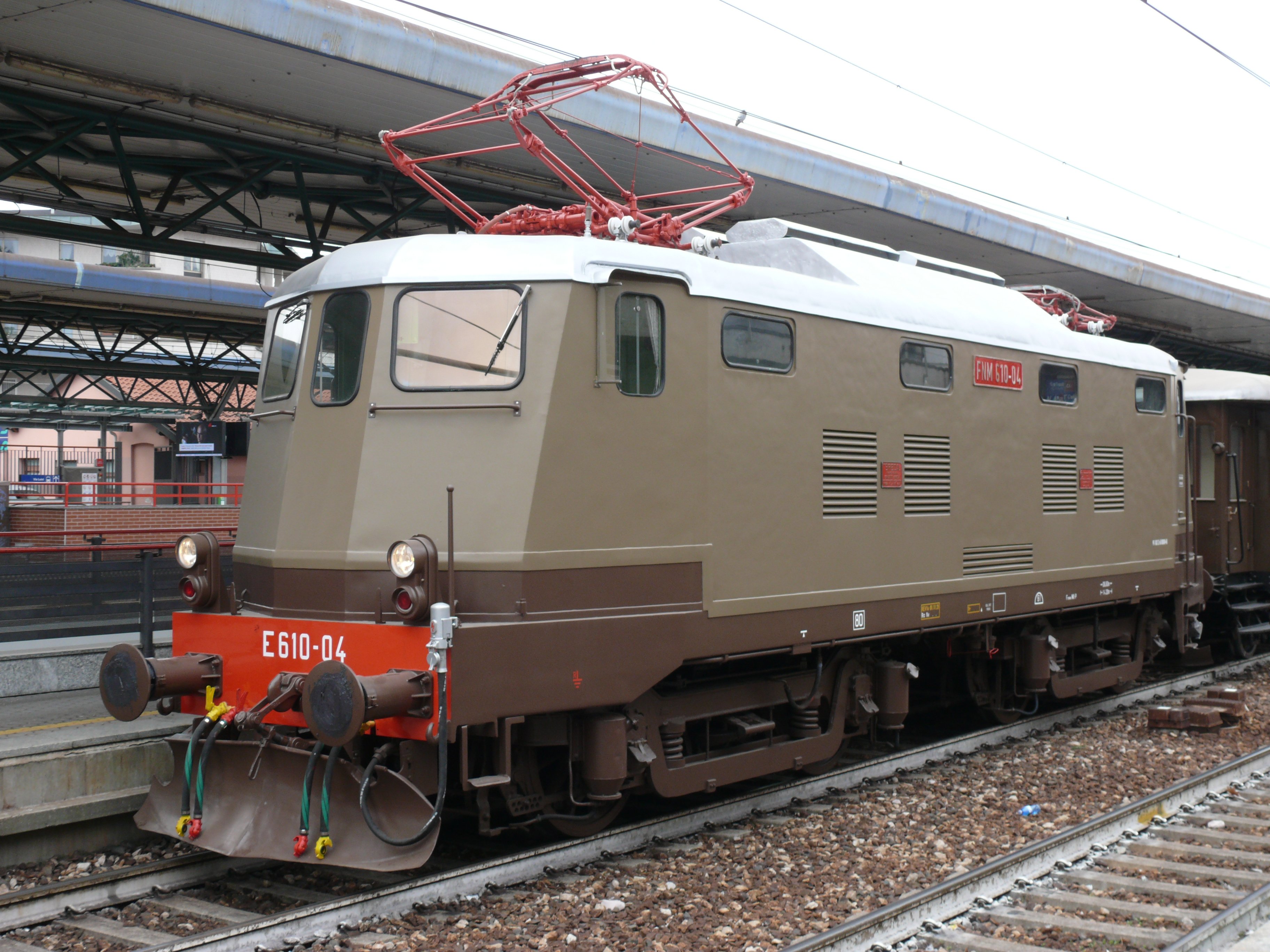Following World War II, 4 locomotives of the new E 610 class with CGE electrical equipment were commissioned to Breda, in order to strengthen the rapidly growing service. The locomotives entered into service in 1949. They featured a brand-new structure and design. They consist of a metal body with an aerodynamic profile and polygonal cabs, similar to those of the FS E 424 and E 636 locomotives. The chassis and body are made from fully electro-welded steel sections and sheets creating a self-supporting structure. The body with its frame rests on two Commonwealth-type bogies. The 4 motors are CT 350 and are identical to those fitted on the E 600, as are many other components. This is to meet standardisation requirements for FNM material and parts. Maximum speed of 80 km/h and power of 1400 hp. Tram-type transmission. In the early ‘60s, the driving cabs were equipped with a front door and gangway to allow the movement of staff. Three of the four locomotives are still in existence. The 04 in operation.
E-610

- Progettazione: 1949
- Costruzione: 1949
- Esercizio: 1949-presente
- Massa in servizio: t.61
- Rodiggio: Bo’ Bo’
- Ruote motrici Ø: 1.250 mm
- Costruttore: BREDA-CGE Milano
- Lunghezza fuori tutto: 14.200 mm
- Larghezza: 3.000 mm
- Rapporto di trasmissione: 20/74
- Potenza oraria Motori CT 350: 1.030 kW
- Forza trazione oraria: 88,3 kN
- Altezza imperiale: 3.790 mm
- Interperno carrelli: 6.600 mm
- Passo carrelli: 3.000 mm
- Sforzo all’avviamento: 147 kN
- Velocita massima: 80 Km/h
- Alimentazione: 3 kV CC
- Design date: 1949
- Build date: 1949
- Service date: 1949-presente
- Service mass: 61 tons
- Wheel arrangement: Bo-Bo
- Diameter of the driving wheels: 1,250 mm
- Builder: BREDA-CGE Milan
- Overall length: 14,200 mm
- Width: 3,000 mm
- Gear ratio: 20/74
- 1-hour power CT350 motors: 1,030 kW
- 1-hour tractive effort: 88.3 kN
- Roof height: 3,790 mm
- Distance between bogie centres: 6,600 mm
- Bogie wheelbase: 3,000 mm
- Starting tractive effort: 147 kN
- Maximum speed: 80 Km/h
- Voltage: 3 kV CC
Inside, the body is divided into three sections. The two driving cabs at each end are equipped with three large front windscreens and two side windows arranged on the aerodynamic polygonal head. They house the control panels for the various services, the handle-operated controller for forward/reverse movement and speed, the brake cocks, the light switches, the whistle and the handbrake wheel. The two cabs are connected by a side corridor accessed via doors located in the wall behind the driver. The high-voltage equipment compartment is accessible separately via two other doors also on the back wall of the cab. This houses the contactors, rheostats and compressors. In the 1960s, doors with platforms were added to the centre front of the train head, to allow access to the train crew. These were eliminated in the 2000s. Each cab is accessed via a ladder on the right-hand side. The E 610-04 locomotive has recently been restored for pulling historic trains.

